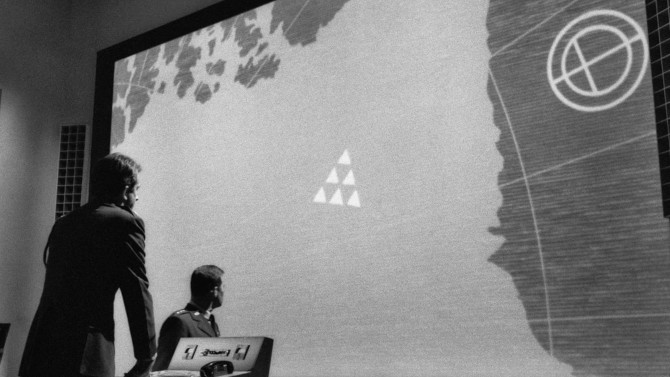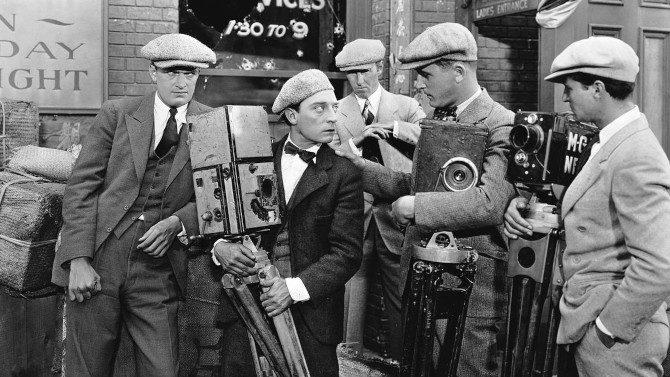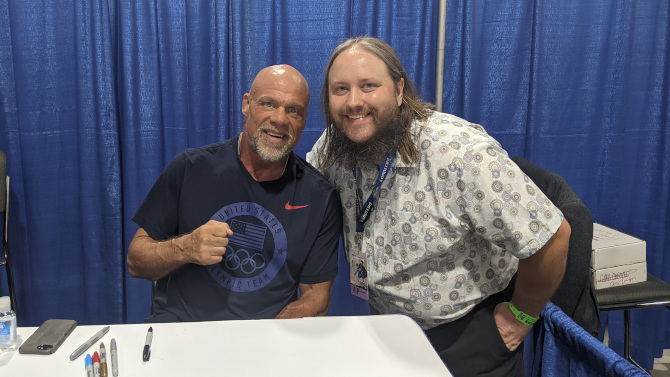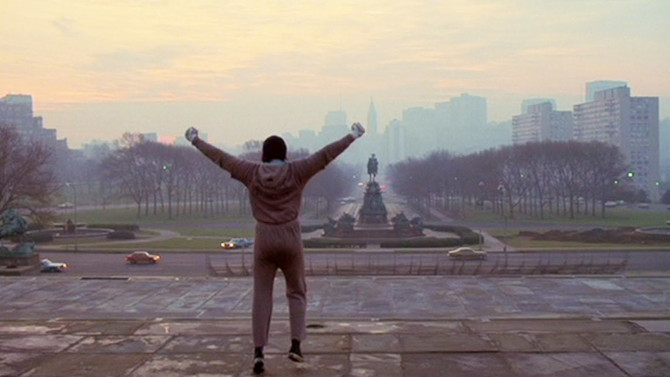
Safety First
Like a severe and utterly serious version of Stanley Kubrick’s 1964 satirical dark comedy Dr. Strangelove or: How I Learned to Stop Worrying and Love the Bomb, you would think that Fail Safe would have been the original release in theatres that was then later spoofed, yet that is not the case. Released approximately six months later in the same year, as you might imagine, it led to very poor returns at the box office – dare I say it (as the film deals with this subject matter)... it was a bomb! Despite that, over time, it has become a bonafide classic. Based upon Eugene Burdick’s 1962 novel of the same name and directed by Sidney Lumet (Dog Day Afternoon), he introduces us to our main players by way of little vignettes.
-

Safety First
Fail SafeMarch 2, 2025Like a severe and utterly serious version of Stanley Kubrick’s 1964 satirical dark comedy Dr. Strangelove or: How I Learned to Stop Worrying and Love the Bomb, you would think that Fail Safe would have been the original release in theatres that was then later spoofed, yet that is not the case. Released approximately six months later in the same year, as you might imagine, it led to very poor returns at the box office – dare I say it (as the film deals with this subject matter)... it was a bomb! Despite that, over time, it has become a bonafide classic. Based upon Eugene Burdick’s 1962 novel of the same name and directed by Sidney Lumet (Dog Day Afternoon), he introduces us to our main players by way of little vignettes.
-

Plights, Camera, Action
The CameramanFebruary 22, 2025Often deemed to be the last classic film made by the great Buster Keaton, The Cameraman (1928) was the final time the silent legend would have anything close to full creative control over one of his own features... as he folded his independent studio to sign with Metro-Goldwyn-Mayer (MGM) – who promptly made him their third highest paid star. Though his future would soon turn very bleak, this first film with the new studio was his own idea.
-

Diabolical Danger
Danger: DiabolikJanuary 24, 2025Transporting its Italian comic book roots to the big screen, Danger: Diabolik (1968), directed by Mario Bava (Blood and Black Lace) and produced by powerhouse Dino De Laurentiis (Barbarella), plays like a vivid three dimensional escapade that fuses elements of swinging sixties spy chic, an early take on the anti-hero, a greedy twist on the Robin Hood tales of yore, and splashes of kitschy Batman (that is, the television series), all coming together for plenty of frivolous fun. The titular Diabolik (John Phillip Law) is a sort of master thief, a black spandex wearing, Jaguar E-type driving genius who thrives on stealing money from an unnamed European government – which, at best, is incompetent, at worst, corrupt users of their taxpaying base. Though, unlike Robin Hood, he keeps the oodles of cash for himself and his helpful mini-skirt wearing girlfriend Eva Kant (Marisa Mell).
-
Star Pick with Kurt Angle
 The Right AngleRockyJanuary 1, 2025
The Right AngleRockyJanuary 1, 2025It was an absolute pleasure to meet and get a quick interview with the great Kurt Angle this past summer in Ottawa. First making a name for himself on the amateur wrestling circuit, it all culminated with a gold medal win (with a broken neck, no less) at the 1996 Summer Olympics held in Atlanta, Georgia. The ultimate achievement for most amateur athletes, this was not the end for Angle, but only the beginning. Just a mere two years later, he had signed on to the World Wrestling Federation (now the WWE or World Wresting Entertainment), a leap that would soon find him taking professional wrestling by storm. Making his television debut in November of 1999, he was a natural, not only at the wrestling, but also on the mike.
-

A Law Unto Themselves
IllegalNovember 27, 2024The front door to an apartment swings open... an unseen figure walks through the living area and approaches a beautiful blonde woman wearing a robe as she walks around the bathroom... he then deliberately empties the barrel of his revolver into her – this is the jarring cold opening to the film noir Illegal (1955), and one thing is for sure, it knows how to grab your attention. Funnily enough, this was the third adaptation of the 1929 play “The Mouthpiece” by Frank J. Collins, following Mouthpiece (1932) and The Man Who Talked Too Much (1940) – and they say movies are remade too much today. Flash to Victor Scott (Edward G. Robinson), a district attorney who is wise to all the angles and is graced with a silver tongue. With an unyielding desire to win (he got it from growing up and fighting his way out of the slums), he argues every case like it is his last.
-

Stealers Wheel
The Big StealNovember 20, 2024A film noir with some eccentricities, The Big Steal (1949), directed by then third time film maker Don Siegel (who would go on to make such greats as Invasion of the Body Snatchers, Dirty Harry, and Escape from Alcatraz), plays like a long chase within a longer chase, while the meeting between gent and femme is something akin to a will they/won’t they screwball comedy. The usually laconic Lt. Duke Halliday (Robert Mitchum) is in quite the conundrum, as he has been robbed of a U.S. Army payroll totaling a whopping three hundred grand by swindler Jim Fiske (Patric Knowles). On the lam in Mexico (a rather rare noir location, also think Ride the Pink Horse and Touch of Evil), Halliday is on his trail... but the problem is, so is his superior – Captain Vincent Blake (William Bendix), who, of course, thinks it was actually the Lieutenant who ran off with the money.

